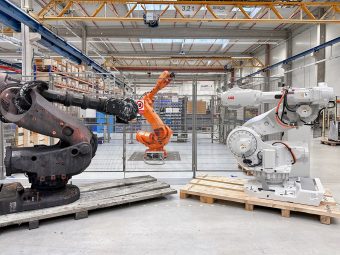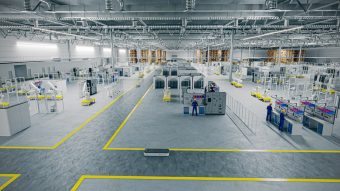
Modern times have brought us new technologies and innovations that make our daily lives easier. The constant growth and progress of all spheres of life require the use of natural resources that are mercilessly consumed, mostly through the system of the linear economy. This model is based on the principle of take-make-use-throw and has contributed significantly to the accelerated development of industry in the 20th century. Applying this model has led to a harmful impact on the environment and global climate change, the solutions of which we are intensively searching for. Applying the circular economy model, a regenerative approach to production can help in this. It practically means that end-of-life products are either returned, through modular design, to production processes or have the possibility of being decomposed so that they do not harm the environment. Technological production processes applied in the circular economy are based on clean technologies. Namely, materials already in use (recycled) are used, and the product obtained after use is used again in the production process instead of going to waste.
The production process, according to the circular economy model, is rounded into a whole, the so-called waste-free production. Although all this seems easy to implement, only 7.2 per cent of products are currently used worldwide and are returned to production at the end of their life. The principles of the circular economy are applicable in almost all business segments and can significantly improve production processes.
IN FOCUS:
- MLEKOMAP: FRESH MILK AT YOUR FINGERTIPS
- EMPOWERING LOCAL COMMUNITIES – PANEL BY PANEL TO POWER PLANT
- CIRCULAR ECONOMY AND BANKING
Robots for a longer working life

The segment in which this business model can be applied in the long term is certainly the extension of the service life of production equipment and machines. The company ABB extends the working life of equipment and devices with its innovative solutions in production processes. In the late 1960s and early 1970s, ABB was the first in the world to promote an industrial painting robot and a robot fully controlled by a microprocessor.
Today, their robots are playing their part in solving the world’s sustainability challenges and helping companies in the process of implementing the circular economy. Thanks to solutions that extend the working life of robots and detailed analysis by ABB experts, the causes of overloads are found, and maintenance strategies are recommended. In the industry, thanks to this service, a large car manufacturer identified the robots that were the most stressed and with preventive maintenance actions, as many as 280 robots will continue to work and be in operation until 2035, despite already accumulated 25,000 working hours. Over the last two decades, ABB’s expert teams have upgraded thousands of robots, significantly extending their working life and enabling a more sustainable way of working, which fits into the segments of the circular economy.
Prepared by: Milica Radičević
Read the story in the new issue of the Energy portal Magazine CIRCULAR ECONOMY



